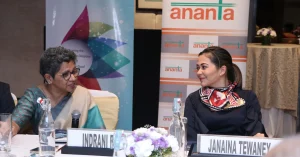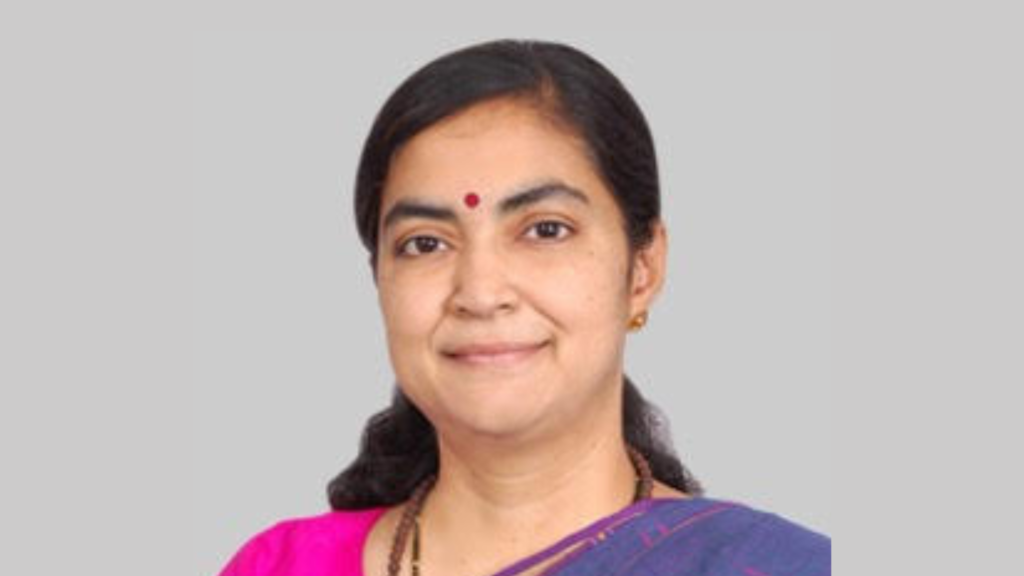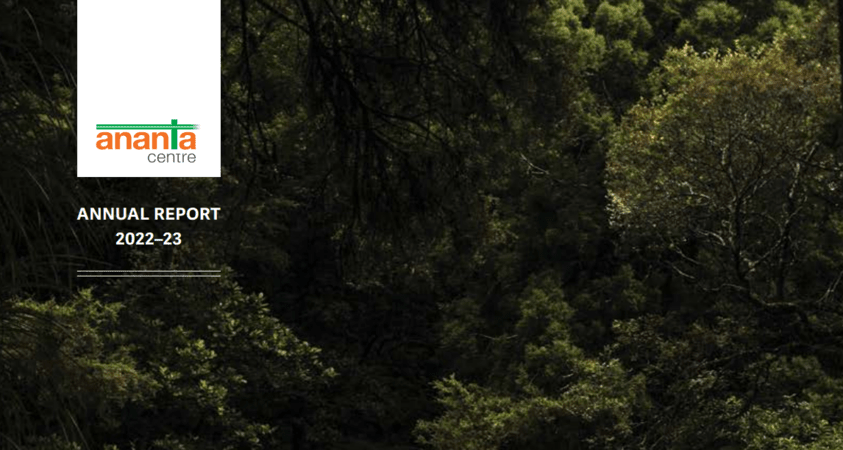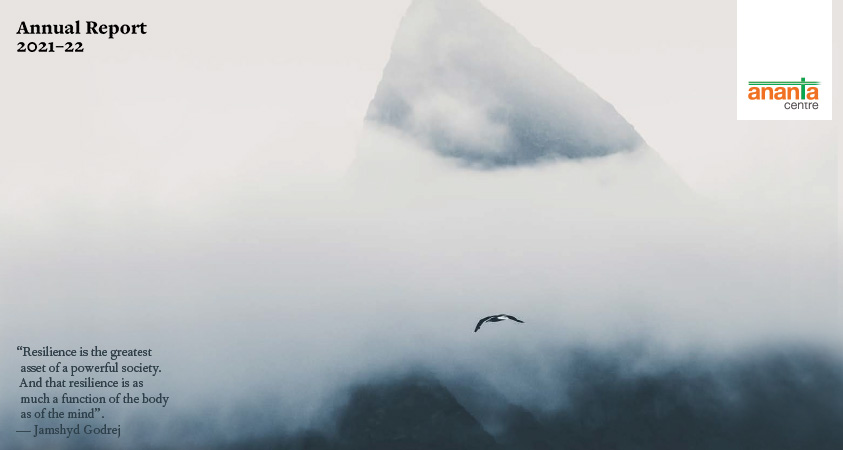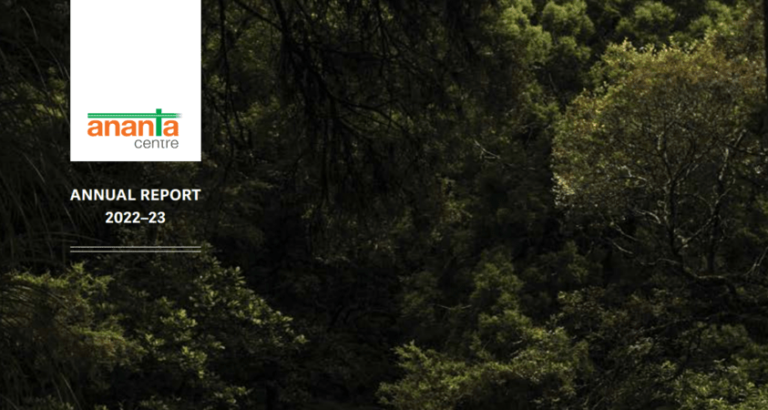Budget Special 2023
FM bets on fiscal prudence, largely ignoring electoral compulsions
Finance Minister Nirmala Sitharaman’s fifth consecutive annual Budget, presented in Parliament on February 1, 2023, provided yet another proof of how she and her team continued to remain committed to the idea of fiscal prudence. This year, it was both a pleasant surprise and a relief. Remember that the Union Budget for 2023-24 was unveiled in the run-up to the scheduled conduct of as many as nine Assembly elections and a general election over the next 16 months. And since this was the final full Budget of the Modi government in its second term, the logical expectation was that the finance minister might loosen the purse strings. However, such electoral considerations made little difference to her commitment to fiscal consolidation, even though the Budget did contain a few tax proposals that created a feel-good factor for middle-class Indians and, more importantly, the Budget’s pace of deficit reduction could have been a little faster than what was proposed.
Higher growth, revenue bump help FM meet 2022-23 deficit goal
Three aspects of the finance minister’s commitment to fiscal consolidation deserve to be underlined. One, she stuck to the budgeted fiscal deficit target of 6.4 per cent of gross domestic product (GDP) for 2022-23. This was achieved despite a 6 per cent slippage in expenditure to Rs 41.8 lakh crore from the budgeted figure of Rs 39.44 lakh crore. Of course, what helped her adhere to the fiscal deficit target was a 6.5 per cent bump in the government’s net tax and non-tax revenues to Rs 23.48 lakh crore, compared to the budgeted target of Rs 22 lakh crore, and a 3 per cent underspending of capital expenditure over the budgeted figure of Rs 7.5 lakh crore. Revenue from disinvestment was a spoilsport. Compared to a disinvestment receipt target of Rs 65,000 crore for the full year, the finance minister showed a revised estimate of Rs 60,000 crore, comprising Rs 50,000 crore of disinvestment receipt and Rs 10,000 crore from asset monetization. Indeed, disinvestment revenue could prove to be a bigger spoilsport as receipts under this head in the first nine months of 2022-23 are only Rs 38,670 crore (Rs 31,122 crore of disinvestment and Rs 7,548 crore of asset monetization and other receipts). However, the increase in the nominal size of the economy in 2022-23 to Rs 273 lakh crore, compared to the earlier Budget estimate of Rs 258 lakh crore, came to the government’s rescue and the fiscal deficit target of 6.4 per cent of GDP was met.
Lower fiscal deficit target for 2023-24, but debt remains elevated
For 2023-24, the fiscal deficit was projected at 5.9 per cent, a consolidation of 0.5 percentage point. Along with that came the finance minister’s commitment that she would reduce the fiscal deficit to 4.5 per cent before 2025-26, implying thereby that the deficit cut in each of the two years after 2023-24 would have to be steeper by at least 0.7 percentage point. The task of maintaining fiscal prudence in the two years ahead of 2023-24, therefore, looks more formidable. Not surprisingly, this meant the share of debt in GDP remained elevated at over 57 per cent. The desired reduction of the share of the central government’s debt in GDP to 40 per cent appears to be a far cry and the Indian economy would have to live with the burden of elevated interest costs for some more time. Worse, a rapidly increasing share of the Centre’s net revenue receipts is being consumed by meeting interest payment liabilities. The share of interest payments in its net revenue receipts has been rising from 37 per cent in 2021-22 to 40 per cent in 2022-23 and further up to 41 per cent in 2023-24. Similarly, the share of interest payments in the Centre’s total expenditure is also rising from 21 per cent to 22 per cent and to 24 per cent, respectively, in the same period. If over 40 per cent of the Centre’s revenues is used up for interest payments or about 24 per cent of its total expenditure is accounted for by meeting interest liabilities, the government’s flexibility in allocating resources to the much-needed development sectors is severely constrained. The need for faster fiscal correction under these circumstances can hardly be ignored.
Revenue deficit cut for 2023-24 rides on revenue spend squeeze
Even though an elevated debt level remained a cause for concern, the Budget for 2023-24 proposed a steep reduction in the government’s revenue deficit – the steepest in the last ten years, barring the one achieved in 2021-22. The government’s revenue deficit, which shows the gap between its revenue expenditure and net tax as well as non-tax revenue, had reached a high of 7.3 per cent in the pandemic year of 2020-21. The following year saw it decline by 2.9 percentage points to 4.4 per cent of GDP. The reduction proposed for 2023-24 is by 1.2 percentage points to 2.9 per cent, compared to 4.1 per cent in 2022-23. The sharp reduction in the Centre’s revenue deficit improves the quality of fiscal consolidation, but also raises questions about its feasibility. Achieving a revenue deficit of 2.9 per cent in 2023-24 would depend on the fulfillment of two conditions. One, the government’s net revenue receipts should grow by 12 per cent, which will be task as the nominal size of the economy is projected to grow by 10.5 per cent in 2023-24. Two, the government’s revenue expenditure should increase by only 1.2 per cent. This will be a difficult task as the coming financial year will see nine Assembly elections leading up to a general election in May 2024. Revenue expenditure pressure would be excessive and there is every likelihood of the government exceeding this target. Even in 2022-23, the government had budgeted for a revenue expenditure increase of less than one per cent, but the revised estimate for 2022-23 shows that the revenue expenditure has grown by over 8 per cent.
Healthy capex increase behind FM’s modest fiscal correction
The variation between the reduction in the fiscal deficit and that in the revenue deficit was quite sharp. A correction of 0.5 percentage point for fiscal deficit was much less than the projected revenue deficit reduction of 1.2 percentage points. This is unusual and could be explained by the government’s increased focus on capital expenditure – a key feature of Ms Sitharaman’s Budget for 2023-24. She proposed to raise the government’s capital expenditure to Rs 10 lakh crore in 2023-24, or about 3.3 per cent of GDP. The last time the government’s capex had crossed the level of 3 per cent of GDP was almost two decades ago in 2004-05, when it was 3.6 per cent. More importantly, Ms Sitharaman has consistently raised the government’s capital expenditure by hefty margins in each of her last four Budgets, as a result of which its share in GDP rose from 1.67 per cent in 2019-20 to 2.67 per cent in 2022-23 and now would go up to 3.3 per cent in 2023-24. Of the Rs 10 lakh crore of capex, the Railways got the largest share at Rs 2.4 lakh crore, even as the Railways’ own resources raising declined and its operating ratio, an indicator of its financial efficiency, made slow improvement. The composition of the higher capital expenditure has also changed significantly. The states would get only Rs 10,000 crore from the overall capex of Rs 5.93 lakh crore in 2021-22. In the following year, the states were allocated Rs 1 lakh crore out of Rs 7.5 lakh crore by way of 50-year interest-free loan for capex, which was linked to reforms conditionality. For 2023-24, the allocation for states has gone up to Rs 1.3 lakh crore out of the higher outlay of Rs 10 lakh crore. Clearly, the finance minister is betting big on capital investment, through the Centre as also through the states, to sustain the economy’s growth. She had the option to reduce the fiscal deficit at a faster pace by slowing down capex and thereby helping soften the cost of money, which at present remains elevated, and bringing down government debt faster over the next couple of years. But that she chose to go in for higher capital expenditure was perhaps driven by her calculation that private sector investment would take more time to kick in and help sustain the growth momentum.
Growth assumptions suggest limited upside to revenue bump
The Budget’s assumptions of India’s economic growth reflect a healthy dose of realism and conservative projections. It assumes that India’s nominal economic growth in 2023-24 would decelerate to 10.5 per cent, compared to 15.4 per cent estimated in the First Advance Estimate for 2022-23. While framing the Budget for 2022-23, Ms Sitharaman had assumed an economic growth rate of 11.2. per cent in nominal terms. Eventually, the nominal growth turned out to be 15.4 per cent for 2022-23, giving the Budget numbers extra cushion. Something similar had happened in 2021-22 as well – the Budget’s assumption for nominal growth then was 14.4 per cent, but the actual growth turned out to be 19.5 per cent. For 2023-24, however, the projection of 10.5 per cent nominal growth may not have the kind of upside as the previous two years’ projections had enjoyed. To that extent, the advantage of higher revenue collections, arising out of higher nominal growth, may be limited in 2023-24, unless inflation springs a nasty surprise and remains elevated.
Tax growth hides lower tax buoyancy & flat tax-GDP ratio
The Centre’s gross tax collections are projected to grow by 10.45 per cent to Rs 33.61 lakh crore in 2023-24, compared to Rs 30.43 lakh crore as per the revised estimate for 2022-23. After recording a 33 per cent increase in 2021-22, gross tax collections growth slowed to 12 per cent in 2022-23. A steady deceleration in gross tax collections growth cannot be missed and should be a cause for concern because the Centre’s tax collections buoyancy is also significantly going down in this period. Tax buoyancy shows if tax collections are growing at the same rate as the economy. Tax buoyancy in 2021-22 had reached a healthy level of 1.7 but fell to 0.8 in 2022-23. The Budget for 2023-24 assumes a tax buoyancy rate of 0.99, which means that collections once again would be growing at a rate less than that of the economy. Even this level of tax buoyancy could be a challenge, since the Rs 37,000 crore revenue foregone on account of income-tax reliefs is not captured in the direct tax collection figures in the Budget. Even the share of gross tax collections in GDP is expected to remain broadly flat at 11.13 per cent in 2023-24, compared to 11.14 per cent in 2022-23, which was down from 11.44 per cent in 2021-22. More tax reforms to widen the tax base would be needed to improve tax buoyancy and the share of gross tax collections in GDP.
Non-tax revenues rise, but stay at just 1 per cent of GDP
After recording a 28 per cent contraction in 2022-23, the government’s non-tax revenues are projected to grow by 15 per cent to Rs 3 lakh crore in 2023-24. The decline in non-tax revenues to Rs 2.62 lakh crore in 2022-23 was largely because there was no extra benefit from the surplus transfer from the Reserve Bank of India (RBI) this year. In 2021-22, non-tax revenues had been buoyed by a windfall gain of RBI’s surplus transfer. The good news is that the 15 per cent increase in non-tax revenues in 2023-24 is not significantly dependent on the central bank’s bounty in the form of either surplus transfer or dividend payments. Surplus transfer and dividends by the RBI and dividends of nationalised banks are projected to grow by 17 per cent to Rs 48,000 crore in 2023-24. But a break-down of the other main sources of non-tax revenues shows the nature of the economic recovery expected to take place next year. Spectrum and licence fees from telecom operators will see a 30 per cent increase to Rs 89,469 crore. Revenues from petroleum exploration licence fee and royalty on crude oil and gas would go up by 37 per cent to Rs 24,185 crore in 2023-24. Power sector fees collected by the Central Electricity Authority also are expected to go up by 37 per cent to Rs 6,400 crore in 2023-24. Dividends from non-banking state-owned enterprises will see no increase at Rs 43,000 crore, reflecting the financially strained conditions of the public sector. Yet, the potential of non-tax revenues has hardly been tapped. Their share in GDP used to be over 2 per cent for well over a decade and a half from 1990-91 to 2005-06. Since then, the share of non-tax revenues in GDP has been falling and stayed below 2 per cent on all these years, except in two years – in 2007-08 and 2010-11. In 2022-23, the share slipped below the 1 per cent mark at 0.96 per cent of GDP. In the coming year, the share will go up to 1 per cent, but it remains well below its potential and reflects the government’s inability to deepen and widen the sources of non-tax revenues from different sectors of the economy.
Lower disinvestment reflects market mood & oncoming polls
The Budget for 2023-24 reveals the government’s conservatism on the disinvestment front considering its modest performance in raising resources through the sale of assets and shares or through privatisation. The numbers also reflect the government’s assessment that the capital market may not remain as bullish as to allow it to raise more resources through the disinvestment route. Far from its earlier enthusiasm of setting a target of monetizing assets worth Rs 6 lakh crore over a period of four years ending March 2026, Ms Sitharaman’s Budget speech for 2023-24 made no mention of disinvestment or asset monetization. The numbers showed that against a target of Rs 65,000 crore through disinvestment, the government hopes to garner only Rs 50,000 crore through the sale of shares in public sector undertakings (PSU) and an additional Rs 10,000 crore is being mobilized through asset monetization. Till December 2022, the government could mobilise only about Rs 38,000 crore through these two routes (Rs 31,000 crore through share sale and Rs 7,000 crore to asset monetization). The task of raising another Rs 22,000 crore in the last quarter of the current year would be formidable, given the volatile state of the Indian stock market. For 2023-24, the disinvestment and asset monetization targets are set at Rs 51,000 crore and Rs 10,000 crore, respectively. These are modest targets. The finance ministry is confident that completing the PSU share sales in the pending list would alone help it reach the disinvestment goal. Bank privatisation too is contingent on bringing about the necessary legislative changes. But these decisions would also be dependent on the state of the markets and the government’s political appetite for launching big-ticket PSU share sales and embarking on the promised privatisation of two banks and an insurance company.
Expenditure reined in, but some schemes & sectors underfunded
The government’s total expenditure is projected to grow by 7.5 per cent to Rs 45 lakh crore in 2023-24. This increase would have been less if the capital expenditure had not been projected to go up by 37 per cent. Consequently, the Centre’s revenue expenditure is to grow by only 1.2 per cent – a difficult target to meet. The only major programme that sees a decent increase is the Jal Jeevan Mission or the National Rural Drinking Water Mission – its outlay is to go up by 40 per cent to Rs 70,000 crore, compared to Rs 55,000 crore in 2022-23. All other major expenditure programmes have seen either a modest increase or even a decline – the Mahatma Gandhi National Rural Employment Guarantee Programme will see a decline of 33 per cent to Rs 60,000 crore and the Pradhan Mantri Kisan Samman Nidhi will see no increase in its allocation at Rs 60,000 crore. Even the Pradhan Mantri Awas Yojana will see its total outlay go up by only 3 per cent to Rs 79,590 crore, even though its rural component would see a big increase at the cost of the allocation for the urban housing scheme. Major subsidies expenditure is to decline by 28 per cent, thanks to lower international fertiliser prices and the discontinuation of the PM Garib Kalyan Anna Yojana. A token increase of less than 6 per cent for defence for next year is also a cause for concern. It is an expenditure estimate that may have to be revised upwards due to pressure in the course of 2023-24. A significant area of expenditure is on green energy, where the Budget provides allocations for energy transition, energy storage projects, green energy mission and renewable energy evacuation.
Move towards an exemptions-free personal income-tax regime
A major highlight of Ms Sitharaman’s fifth Budget was the announcement of a revamped income-tax regime for individuals without exemptions. The alternative income-tax regime for individuals without tax exemption benefits was introduced in 2020-21, with six different tax slabs in addition to the nil tax rate for income up to Rs 2.5 lakh. Not many individual taxpayers opted for the new exemptions-free tax regime. Hence, the finance minister streamlined the scheme by reducing the number of tax slabs to five, extending the benefit of standard deduction of Rs 50,000 to salaried individuals and removing the surcharge on taxable income above Rs 5 crore from 37 per cent to 25 per cent, thereby reducing the tax incidence on the top category of income-tax payers from 42.7 per cent to 39 per cent. The revenue impact of the surcharge reduction would be solely borne by the Centre and the states would not suffer any decline in their share in central revenues as a result. The revamped new scheme was made the default regime for individual taxpayers and the government expects that a little more than half of the existing taxpayers would opt for the exemptions-free regime because of its implicit concessions. Effectively, the modified exemptions-free income-tax regime reduces the tax rates for those in the taxable income brackets of Rs 5 to 6 lakh (down from 10 per cent to 5 per cent), Rs 7.5 lakh to Rs 9 lakh (down from 15 per cent to 10 per cent), Rs 10 lakh to Rs 12 lakh (down from 20 per cent to 15 per cent) and of Rs 12.5 lakh to Rs 15 lakh (down from 25 per cent to 20 per cent). The finance ministry’s estimate of revenue loss as a result of the modifications is Rs 37,000 crore. However, since this provision was introduced at the last minute, the personal income-tax collections target of Rs 9 lakh crore does not reflect the impact of the concessions. In other words, the personal income-tax collections number could be slightly overestimated. The impact by way of revenue gain through the capping of capital gains exemptions on real estate purchases at Rs 10 crore and denial of tax benefits on insurance policies with a premium value of above Rs 5 lakh would be marginal, though these measures would neutralise some of the benefits the super-rich got by way of a reduced surcharge on their income.
Package for cooperatives with lower tax and higher cash use
A special package for the cooperatives sector was a highlight of the Modi government’s last full Budget before the next general election. The finance minister announced the setting up of several multi-purpose cooperative societies, primary fishery societies and dairy cooperative societies in uncovered panchayats and villages. In addition, she laid out a plan for creating decentralized storage capacity to help farmers store their produce and realise remunerative prices. On the taxation side, the finance minister extended the benefit of a lower tax rate of 15 per cent (available at present only for new manufacturing companies) to include new cooperatives that commence manufacturing activities by the end of March 2024. Sugar cooperatives are to be allowed to claim deductions on their payment made to sugarcane farmers for the period before 2016-17, resulting in a relief of Rs 10,000 crore. Interestingly, primary agricultural cooperative societies and primary cooperative agriculture and rural development banks have been allowed a higher limit of cash deposits and cash loans of Rs 2 lakh per member. Cooperative societies are also exempted from tax deduction at source for cash withdrawal up to Rs 3 crore. Incentives for the use of cash is an unusual concession extended and perhaps the cooperatives are going to be the only such beneficiaries in an economy that is trying to move away from the use of cash.
Customs duty reforms with no pronounced protectionism
The Customs duty changes did not continue with the past few years’ rhetoric of creating a level playing field for domestic manufacturers or providing protection to the domestic industry. Instead, there was greater focus on Customs duty reforms in the form of a reduction in the number of Customs duty rates from 21 to 13 and a reduction in the Customs duty rate on at least 18 items to reduce their input costs, deepen value addition, promote export competitiveness, correct inverted duty structure and boost domestic manufacturing. Sectors benefitting from the duty reduction included agriculture including marine products, minerals, gems and jewellery, capital goods, electronic appliances, information technology and electronics. There were Customs duty increases also, but such cases were about 15 only. Customs duty collections are expected to go up by only 11 per cent to Rs 2.33 lakh crore in 2023-24.
Financial sector package for GIFT City and regulation
A slew of tax measures to promote the Gujarat International Finance Tech (GIFT) City’s International Finance Service Centre (IFSC) has been announced in the Budget. The International Finance Service Centre Authority or IFSCA will be empowered to regulate the financial entities located there. A single-window system will be set up for registration and approval by IFSCA and other government agencies. Banking units of foreign banks, located at the GIFT City IFSC have been allowed to finance acquisitions, a facility that is available to domestic banks with limits. Data centres of foreign outfits will be allowed to be set up at GIFT City IFSC. More importantly, the Budget announced a plan to review existing regulations for the financial sector and amend the Banking Regulation Act, the Banking Companies Act and the Reserve Bank of India Act to improve bank governance and enhance investors’ protection.





